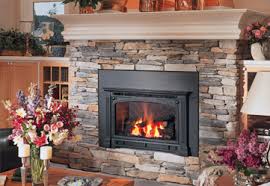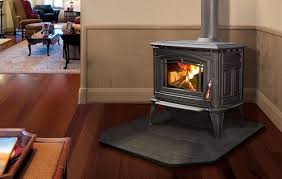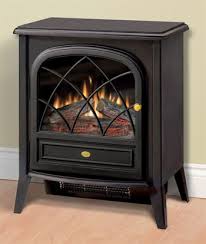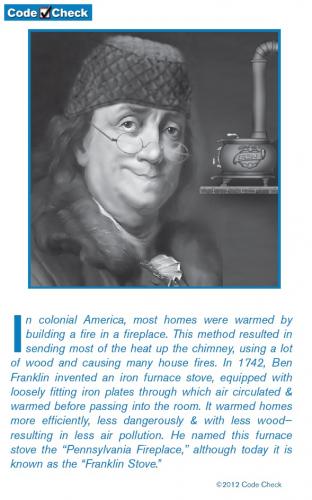4. Blogs by your San Antonio Home Inspector
Types of Fireplaces
Submitted by JoeKeresztury on Sun, 10/04/2015 - 01:42.Do you know how many different kinds of fireplaces there are? There are a wide variety of alternative heating methods available to you, including fireplaces, wood burning stoves, portable appliances, and outdoor wood furnaces. Maybe you've considered adding a fireplace to your cabin or home? In this article, we'll talk about some of the different kinds of fireplaces and the advantages and disadvantages of each. We'll consider materials, efficiency, safety and installation as elements of making an informed decision. Fireplaces have been around for a long time. As you might guess, they were not much more than a fire pit at first and weren't all that safe until the invention of the chimney in the 11th or 12th century. Historically, fireplaces have had more utility value as it was the place for cooking, drying and it was the main heat source for the house. Today, a fireplace mostly provides a beautiful architectural feature and some room ambiance, along with a way to take off the chill. Fireplaces have come a long way over the centuries. New innovations, materials, and energy sources have given us more efficient methods to stay warm. The cost of heating a home has risen over the last several years, requiring more homeowners to seek alternative heating methods. There are at least three main types of fireplaces, each one designed for specific purposes: Built-ins/wall mounted Free standing/add-ons Portable Built-ins/Wall Mounted Any time there's an open flame, safety becomes a priority. Wood burning and gas burning fireplaces must be vented properly. In the wood burning variety, it's important to make sure the chimney is cleaned at least once per year, preferably before you start it up for the first time. A chimney sweep can clean the chimney and often times help with repairs to the chimney as they are needed. Spark arrestors, stone hearths, glass doors, and care to burn appropriate materials are all considerations, especially when children are in the house. Some people choose a fireplace insert. These are designed to fit into a fireplace opening but allow for using an alternative energy source to firewood. These inserts, like prefabs, are built in the factory but they generally fit into the existing fireplace box. This is an option often chosen by homeowners who want to convert their wood burning fireplace to operate on gas. Some plumbing is usually necessary to bring gas to the insert, although an insert doesn't have to operate on gas. Some are also designed to use electricity which may require some additional wiring. Free-standing/Add-ons Portable
 A built-in fireplace is designed into the house or retrofit later. These are architectural features a homeowner has decided to include when the house is built. The built-in or wall mounted fireplace can be built using masonry or it can be factory built or prefabricated. Masonry fireplaces are built by craftsmen who have learned the art of working with stone and brick. These can be simple or elaborate, small or large. In the late 1700's, the wood burning fireplace was improved by Count Rumford. His improvements led to increased efficiency and less heat loss. He saw the deficiencies in a wood burning fireplace, where most of the heat is lost up the chimney, and designed the box to radiate more of the heat back into the room. This was an important application during a time when homes were heated primarily with wood burning fireplaces. This design is still popular today in masonry fireplaces, but it is only moderately more efficient.
A built-in fireplace is designed into the house or retrofit later. These are architectural features a homeowner has decided to include when the house is built. The built-in or wall mounted fireplace can be built using masonry or it can be factory built or prefabricated. Masonry fireplaces are built by craftsmen who have learned the art of working with stone and brick. These can be simple or elaborate, small or large. In the late 1700's, the wood burning fireplace was improved by Count Rumford. His improvements led to increased efficiency and less heat loss. He saw the deficiencies in a wood burning fireplace, where most of the heat is lost up the chimney, and designed the box to radiate more of the heat back into the room. This was an important application during a time when homes were heated primarily with wood burning fireplaces. This design is still popular today in masonry fireplaces, but it is only moderately more efficient.  These are designed to be added to a house later or as an additional feature. There are a wide variety of these to choose from and they use a range of energy sources. A potbellied stove is an example of a free-standing fireplace. These are often used for heat and not as much for the aesthetics. For safety purposes, these are usually placed away from walls and require a safe perimeter from flammable objects.
These are designed to be added to a house later or as an additional feature. There are a wide variety of these to choose from and they use a range of energy sources. A potbellied stove is an example of a free-standing fireplace. These are often used for heat and not as much for the aesthetics. For safety purposes, these are usually placed away from walls and require a safe perimeter from flammable objects.  Portable fireplaces or heating appliances are often used for heating small areas. These have become popular over the years for people who don't want to waste a lot of energy heating space that isn't used. These also come in a wide variety of styles. Most of these will use an alternative source of heat besides wood, whether it's gas, electricity, kerosene, or propane. These are also popular in shops and garages where having a portable heat source is especially convenient. Special care should be taken that these are not overturned, although most new appliances are equipped with a safety shutoff in the event that this happens.
Portable fireplaces or heating appliances are often used for heating small areas. These have become popular over the years for people who don't want to waste a lot of energy heating space that isn't used. These also come in a wide variety of styles. Most of these will use an alternative source of heat besides wood, whether it's gas, electricity, kerosene, or propane. These are also popular in shops and garages where having a portable heat source is especially convenient. Special care should be taken that these are not overturned, although most new appliances are equipped with a safety shutoff in the event that this happens.

The other issue we'll cover briefly is fuel. In order to have heat, there must be a source. Wood burning fireplaces are probably the most common, but as noted earlier, they are not very efficient despite the design improvements. When you factor in the cost of chimney sweeps, masonry maintenance, acquiring firewood and keeping it dry, clean and in a safe place, you might want to consider another option for fuel.
Some common fuel options to consider are:
Wood
Gas
Electric
Wood
Wood is the most common and it's readily available depending on where you live. In the city, a pickup truck load of firewood can range in price from $40 to $150 or more. A truck load is approximately equal to a half cord of firewood. Make sure you acquire dry, seasoned firewood so that it burns better. The smell of firewood burning is not easily matched and is one of the reasons people want a wood burning fireplace. That same smell is no fun though when a chimney is plugged up and it fills the house. A wood burning fireplace has a lot of charm and appeal, but they come with a lot of responsibility. Safety and maintenance are always a concern. We'll cover more of that in a future article.
Gas
This is a more convenient fuel for fireplaces and can be more efficient, too. Gas fireplaces are gaining in popularity for these reasons. The cost of gas varies and can help determine cost efficiency. There's no need for firewood and newer models turn on with the flick of a switch.
There are vented and vent-free gas fireplaces. Vented fireplaces still require a chimney or vent to remove harmful fumes. Artificial logs are used to help these fireplaces look closer to the natural flames produced by burning wood. Vented fireplaces loose more heat up the chimney, but if you are looking for ambience more than heat, it is definitely the choice for you.
In a vent-free gas fireplace, the gas burns at a higher temperature that destroys the harmful gasses, resulting in a safe and energy efficient choice for your home. Specifically, a vent free fireplace releases less than half the carbon monoxide as the average candle and current models come with oxygen depletion sensors so in the extremely unlikely event that the of oxygen in the room starts to get low, they automatically shut off. While all the heat stays in your home, note that the flames are smaller and bluer than other fireplace types due to the higher heat. These units should not be installed in bathrooms and units installed in bedrooms should be 10,000 BTUs or less.
New gas fireplaces are more efficient and still provide the ambiance. Some even have realistic looking artificial logs that radiate flames. Although the logs are not real, the heat from the gas fireplace can be substantial and certainly enough to warm a room and provide some additional warmth throughout the house if it's equipped with a fan to distribute the warm air.
Many new cabins and homes come equipped with gas fireplaces much like you'll find in this
<a href=http://www.mobilehomesdirect4less.com/skyranch-kenedy-e226//>mobile home for sale</a>.
Electric
Electric fireplaces are either hard wired or plug-in to an outlet in the home. Electric models are used primarily for convenience. They are safer but still involve heat so safety is a concern. The heat does not come from actual flames, but from heated coils. Many larger units feature a virtual or faux flame so you can still enjoy an appearance of fire. This might be a good choice for someone who doesn't already have a fireplace box. They can be retrofit to an existing home with relatively little effort. Portable units are quite common for heating small to middle sized rooms. Efficiency is based on the cost of your electricity provider.
We've talked about the primary types of indoor fireplaces. There are also outdoor stoves that can operate on a variety of fuel types. Some are built to be far more efficient than an indoor fireplace. They tend to be heating alternatives or whole house replacements, not supplemental and so they are more expensive than what we've covered above. New standards for outdoor stoves are coming online soon. The primary objective seems to be making them even more efficient while reducing carbon emissions. These
<a href=http://www2.epa.gov/residential-wood-heaters/proposed-new-source-performance-standards-residential-wood-heaters/>new guidelines</a> are specific to certain appliances but may eventually encompass or influence all fireplaces at some point.
Even with improved designs, wood burning fireplaces are relatively inefficient. Today, there are other options for homeowners besides the common wood burning fireplace. A fireplace is a wonderful feature for a home and offers enjoyment and warmth. Whether you decide on a wood burning fireplace, a gas fireplace or electric, you're sure to enjoy it's many benefits. Just remember that part of the responsibility of a fireplace is to properly maintain it so your family is not only warm, but safe.
Joseph W. Keresztury
JWK Inspections




















